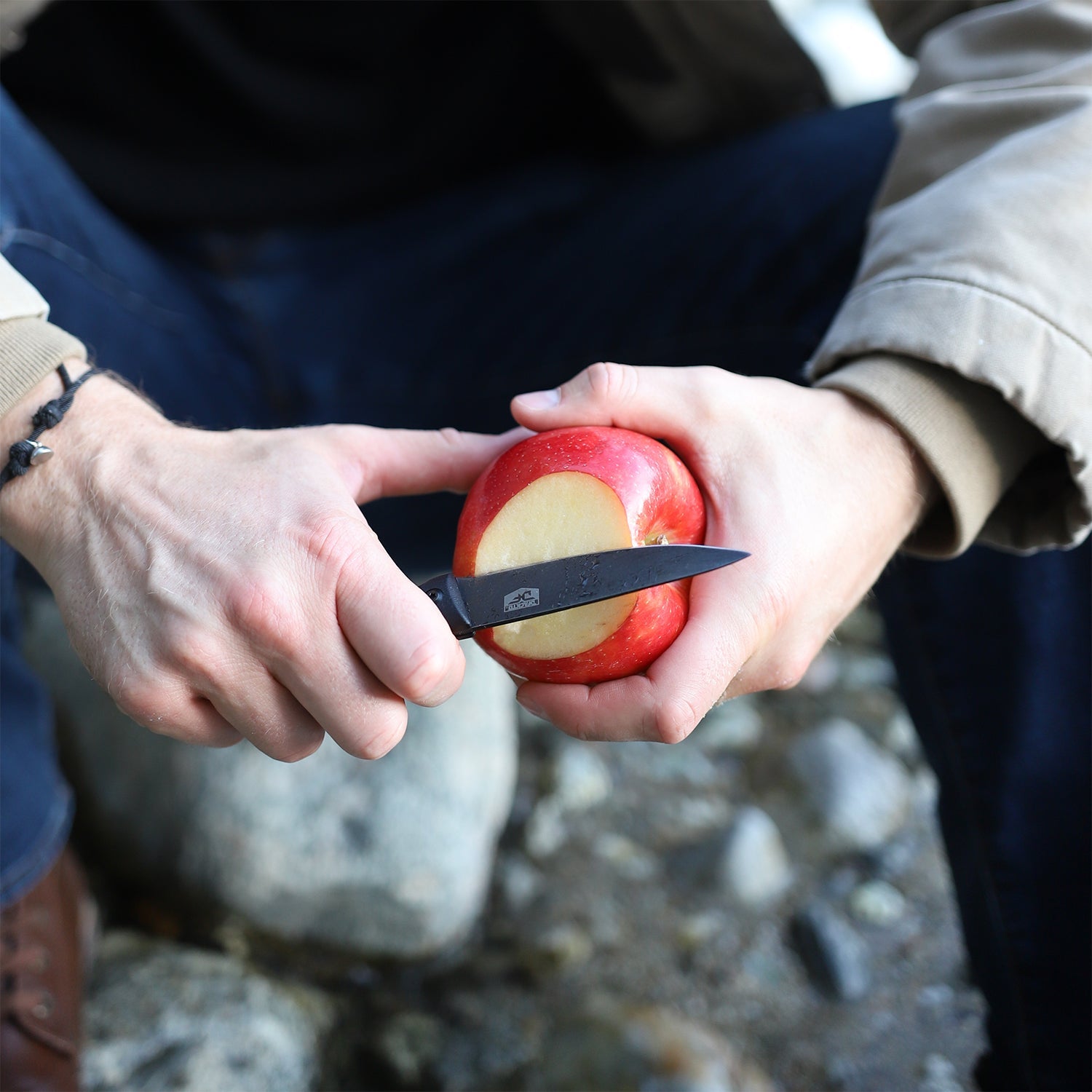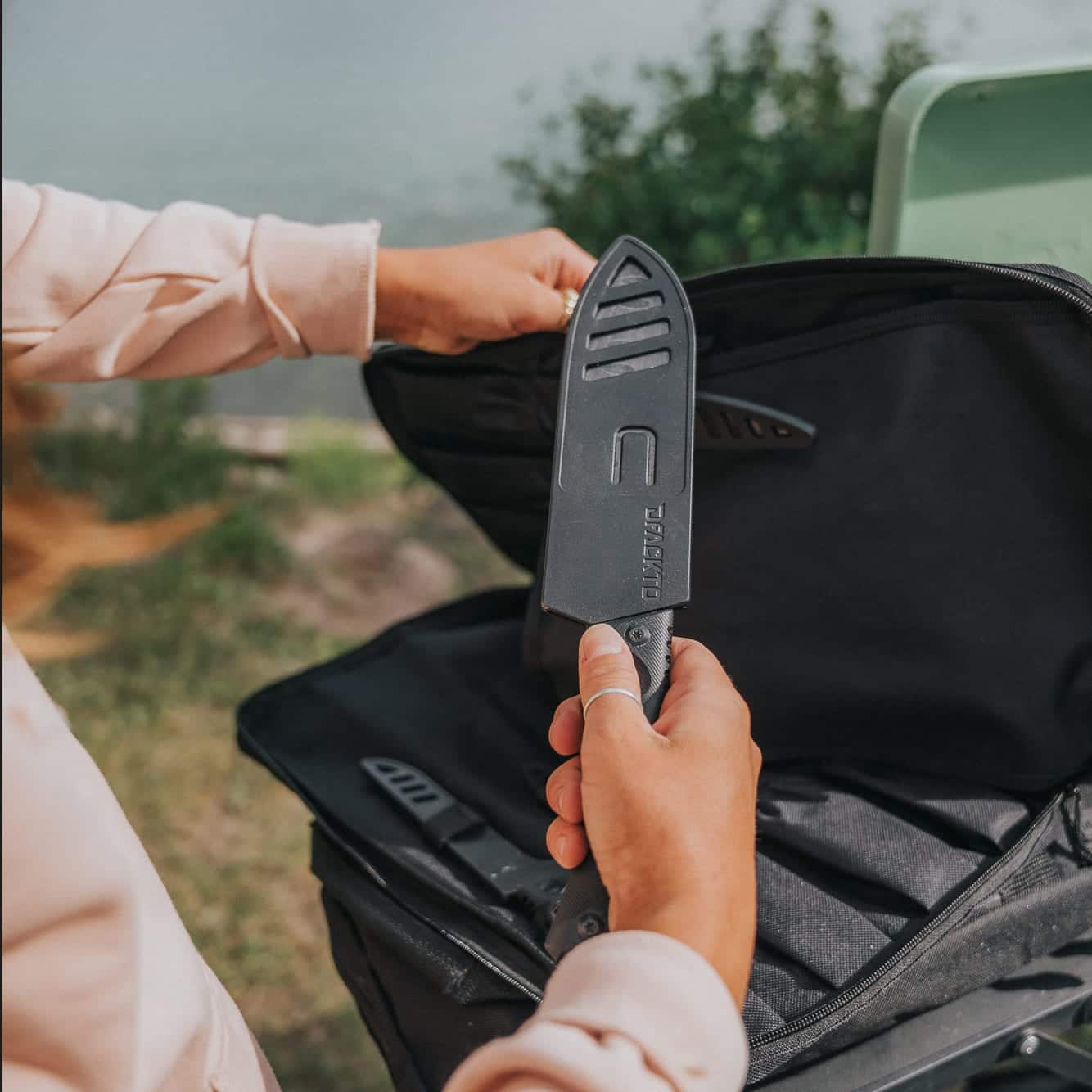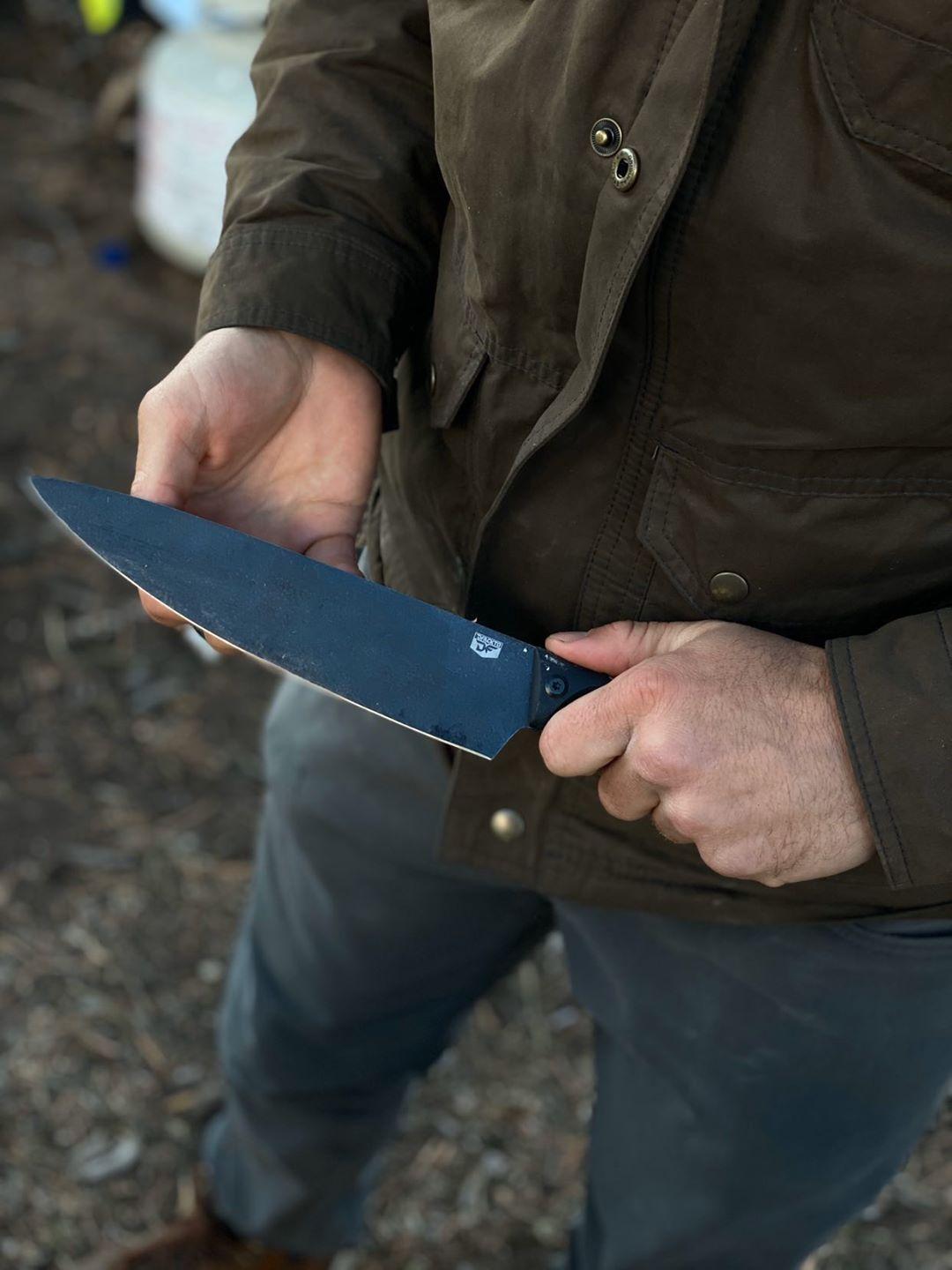In the world of wilderness travel, overlanding, and backcountry cooking, knives aren’t accessories—they’re essential tools. But one question comes up again and again among campers, bushcrafters, and field chefs alike:
Should I carry more than one knife for different tasks, like a dedicated kitchen knife and a separate survival blade?
The short answer: Yes. And if you’ve ever tried to slice onions with a thick, full-tang “survival” knife—or baton firewood with a dainty fillet knife—you already know why.
A single knife can be versatile, but when you're venturing off-grid, purpose-built tools designed for specific jobs make all the difference. In this post, we’ll walk through why carrying multiple knives is smart, how to choose the right combo, and what professionals and outdoor operators actually carry in the field.
The Myth of the “Do-It-All” Knife
There’s a lingering myth in bushcraft circles that one knife should do it all—from prepping fish to notching tent poles to splitting kindling.
While the romantic idea of the all-purpose “Rambo” knife or a Serbian cleaver might sound appealing, they usually fall short in real-world application. A thick, heavy blade might be great for survival or camp maintenance, but it's overkill for food prep. Similarly, a delicate slicer or paring knife will feel flimsy if you’re making feather sticks or digging out roots.
In truth, there’s no single perfect knife for every task. That’s why serious outdoorsmen—and military professionals—carry a small system of blades, each with a specific role.
A Real-World Kit: Why More Than One Knife Makes Sense
Let’s break it down into two categories:
- Survival/Camp Maintenance Knife
- Culinary/Food Prep Knife
1. Your Primary Survival Blade
This is the workhorse. The knife you’d rely on to:
- Split kindling
- Cut rope and cordage
- Carve traps or tent stakes
- Baton logs or kindling
- Defend yourself (in a worst-case scenario)
It should be a fixed blade, full tang, with a drop point or spear point and a robust spine. Think heavy-duty, 3 to 4 inches in blade length, with a strong handle grip for chopping and leverage.
This is your backup plan. But here’s the catch: it’s not your kitchen knife.
2. Your Food Prep Knife
When you want to break down wild game, slice vegetables, fillet a trout, or debone meat, you want a thin, sharp, agile blade. Something that feels more like a chef’s knife than a pry bar.
That’s where a dedicated camp kitchen knife comes in.
The Ideal Lightweight Companion: Interceptor 3.5" Paring Knife
While most people associate paring knives with delicate kitchen tasks, a compact trailing point knife like the Interceptor 3.5" isn’t your average paring blade. Designed with field work in mind, this small fixed blade is the perfect companion to your primary survival knife.
- Compact, lightweight, and razor sharp
- Trailing point for precision control, ideal for food prep and bushcraft notching
- Full tang and rugged steel, built for rough conditions
- Tactical, secure grip in wet and inclement conditions
This isn’t a flimsy kitchen accessory. It’s a true bushcraft-ready blade that performs just as well prepping wild greens as it does cleaning fish or carving fine tinder.
The smaller footprint also makes it perfect for campers trying to keep weight down. Pair it with a larger survival blade and you’ve got a system that covers 99% of the tasks you’ll face outdoors.
Why Most Outdoorsmen Carry a Blade System
Let’s take a look at what seasoned field operators and outdoor chefs typically carry:
- Large Fixed Blade (5–7") – 5.5" Tanto Knife - For chopping, batoning, and general camp duties
- Compact Utility Knife (3–4") – 3.5" Paring Knife - For precision bushcraft, light slicing, and EDC
- Dedicated Culinary Blade (6–8") – 8" Chef Knife - For cooking, butchering, and meal prep
Some will even add a multitool or folding knife to the mix, but the key point here is this:
Different knives serve different purposes—and carrying more than one isn’t overkill. It’s good sense.
Tactical Culinary: Blades That Do More Than Cut
There’s a growing movement in the knife world that’s merging culinary performance with rugged, field-ready durability. These aren’t your dad’s steak knives or mall-ninja survival blades. They’re tactical culinary tools—blades that perform in the kitchen and in the elements.
Military personnel involved in combat sustainability programs already carry this philosophy forward. The knives they use need to:
- Prep food in unpredictable conditions
- Hold an edge after hard use
- Withstand extreme environments
- Remain reliable even when wet, greasy, or frozen
If you’re cooking outdoors regularly—whether it’s a weekend trip or multi-day excursion—you need a knife built with that same mindset.
What to Avoid in the Field
A few knife types get popularized online but fail under pressure:
- Serbian chopping knives – Too heavy and unbalanced for agile field use
- Oversized “Rambo” knives – All show, little utility; usually poor steel and grip
- Folding kitchen knives – Not safe or strong enough for rugged use
- Knives with poor handle ergonomics – Fatigue and slippage are safety risks when wet
In the backcountry, aesthetics don’t matter if the knife doesn’t perform. Choose blades that are purpose-built, well-balanced, and field-tested.
The Takeaway: Build a Two-Knife System for Real-World Use
So—should you carry more than one knife?
Absolutely. A smart blade setup for wilderness or overlanding includes:
- A sturdy survival knife
- A precise, food-prep-ready utility knife
- (Optional) a folding multitool or EDC blade for convenience
The goal isn’t to carry more gear—it’s to carry the right gear. A thoughtful knife kit means you can handle anything from making fire to making dinner.
Final Thought: Simplicity Is Survival
Outdoors, every tool you carry should earn its place. A heavy knife that can’t slice veggies, or a thin kitchen blade that cracks under baton pressure, will leave you struggling.
A compact tactical paring knife paired with a strong full-tang camp knife? That’s a setup you can rely on.
Whether you're breaking down meat, carving kindling, or prepping wild greens by the fire—you want tools built for it.
Ready to Upgrade Your Field Kit?
If you’re building your ideal camp kitchen knife system, start with something small and powerful. The Interceptor Series 3.5" Paring Knife offers bushcraft-ready performance in a low-profile, compact blade. Rugged enough to ride on your belt, precise enough for fine food work.
Find the right balance in your gear—and never rely on just one knife to do it all.



